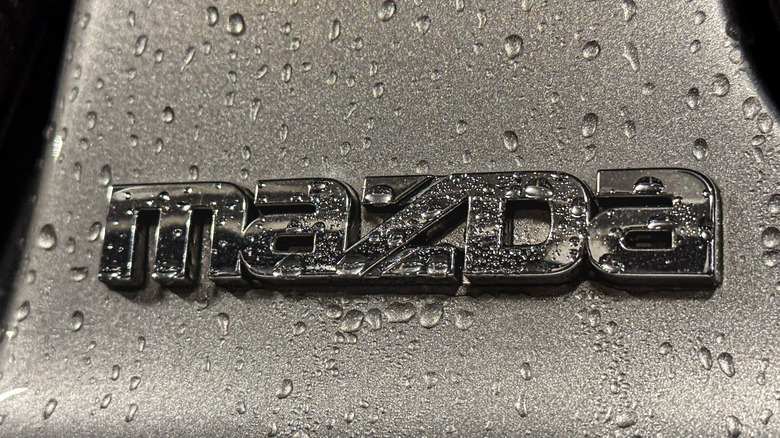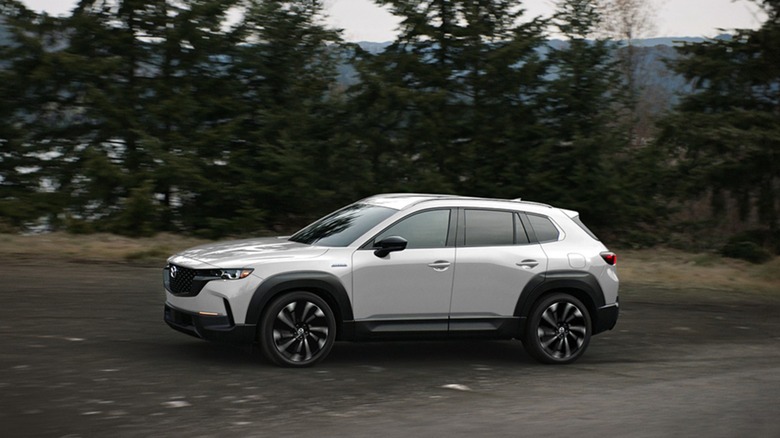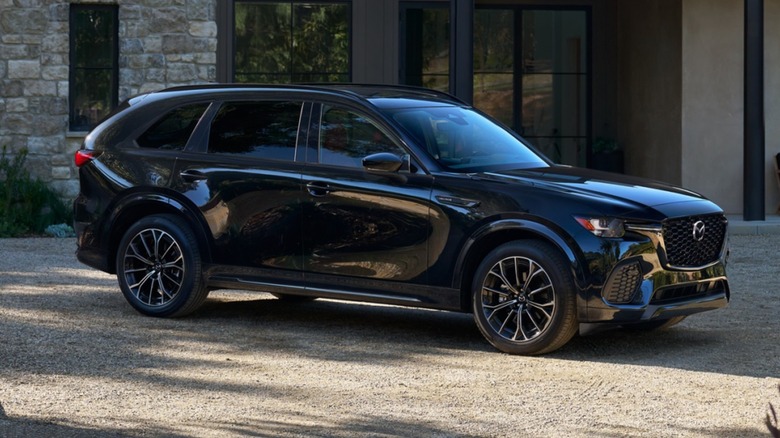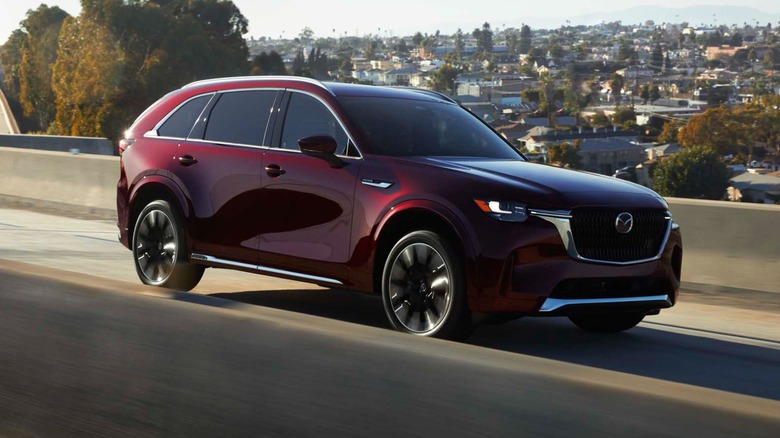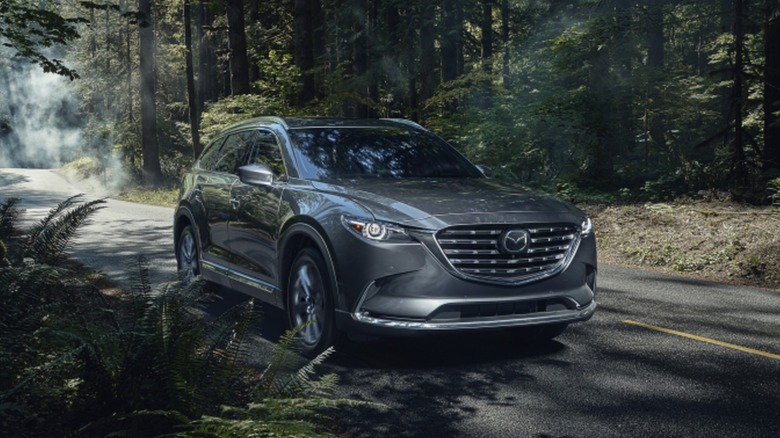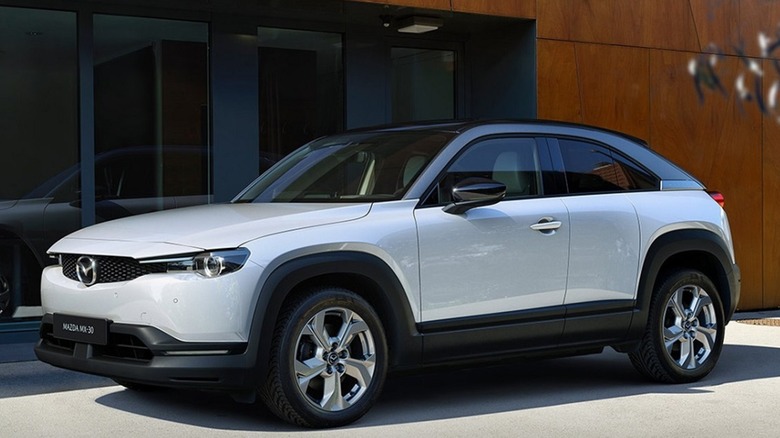5 Mazda Models With The Worst Resale Value
It might lack the popularity of brands like Toyota or Ford, but Mazda is still a respectable competitor in the automotive industry. Our 2025 Mazda3 Hatchback review has shown the company's capability to keep up with its competitors — even if its current offering of electric vehicles is a little underwhelming by comparison. Mazda's used models also hold some decent value across the board, boasting staying power even after many years of service. But as with any brand, there are some models that end up losing more of their original cost than others.
Rankings from iSeeCars, Kelly Blue Book, and CarEdge are able to give good estimates of how valuable a Mazda car will be after 5 years of ownership. As usual, the actual final cost of these models might vary depending on who's selling them or how well-maintained they are. If you're buying or selling a model on this list in exceptional condition, you might hesitate to label it as a Mazda with the worst resale value under its brand. Even so, you should probably expect to struggle with finding better prices for these five vehicles from Mazda.
CX-50
Unlike many Nissan models with the worst resale value, Mazda's CX-50 starts this list off decently enough. After 5 years, you can expect its value to stay somewhere from 60% to 54% of its original cost, even with its hybrid option. Its resale value only falls under an unfavorable label since other Mazda vehicles are able to keep even more on average. The MX-5 Miata, CX-3, and CX-30 all consistently stay above 60% in their estimates, making the CX-50's impressive showing a bit more lackluster by comparison.
The CX-50 also starts at just around $30,000 for a brand-new purchase today. It's the cheapest Mazda available on this list — not counting models that were discontinued — and it's the least-expensive option in the brand's current lineup that has a hybrid alternative. Of course, if all you care about is squeezing as much value out of your purchase as possible, there are still better choices from the company. But even with its less-than-stellar resale value, other modern Mazda hybrids simply can't compete with the CX-50.
CX-70
You could consider the CX-70 to be in a tier above the CX-50, as it comes with a higher base price and more power. Unfortunately, it also suffers from greater variation in its resale value, ranging from a decent 60% to around 53%. With its increased cost of around $40,000 when brand-new, it also means the company loses more money in the long run. After 5 years, the missing value could have been used to purchase a whole new car on its own.
Although this estimate doesn't seem great, it's still just an estimate. In fact, the CX-70 nameplate is new to Mazda, with 2025 being its only model year available so far. The CX-50 is also relatively new, but it's had two extra years under its belt, so its resale value isn't as much of a guess as the CX-70's. In time, reality could end up being far more generous to this model of SUV than it might seem.
CX-90
The previous two SUVs aren't the only models on this list that were released within the last few years. That fact is one of the many things you should know before buying a new or used Mazda CX-90, which is actually priced right in between its counterparts at around $38,000. Unfortunately, it's not able to reach that same sort of middle ground with its resale value. While it shares the same high estimate of 60% after 5 years, other estimates are closer to the low marks of the CX-70 at about 53%, and it could possibly lose even more money due to its pricier trim options.
There's no guarantee that the CX-90's final value will end up as low as it's currently estimated. Its oldest model year is 2024, so it could still be some time before its final value stabilizes fully. But if the CX-90 is anything like the vehicle it was meant to replace, it could end up in an even worse spot once it finally reaches that 5-year mark.
CX-9
The new CX-90 replaced the CX-9 in 2024, but by then, it had already been around since 2009. Although our 2023 Mazda CX-9 review gave praise to its graceful departure, its resale value isn't able to earn those same kind words. The highest estimated value it manages to retain after 5 years is 53%, and its lowest percentage ends up making it the first vehicle on this list to dip below half of its original cost. Without accounting for hybrids or EVs, this can easily qualify as Mazda's lowest-value vehicle.
Considering how many upgrades the CX-90 makes to its predecessor, it's not hard to see why the CX-9 falls short here. It's able to boast better seating capacity and more cargo space on top of the expected stronger engine and improved gas mileage. The CX-50 also finds itself competing with the more established CX-5 model, but that SUV is also still in production today. Due to the timing of its discontinuation, there just isn't nearly as much appeal for the CX-9 in the secondhand market.
MX-30
Rounding out the bottom of this list is the Mazda MX-30, which happens to be the only vehicle here with all-electric capabilities. Its history is also somewhat of a mix between the CX-9 and CX-90, being a newer release that was also discontinued after a short run. Its limited range was only matched by its limited availability, and poor reviews helped to swiftly kill what little potential it had. As one might expect, this unfortunate performance didn't exactly do wonders for its resale value, either.
You don't even need to estimate this EV's performance throughout half a decade of ownership. After just 3 years, the MX-30 has measurably dropped to around 48% of its original value, putting it below every other Mazda in a much shorter timeframe. The only way you can frame this in a positive light is if you're only looking at how well other electric crossovers can hold their value. Even if you care that much about such a restrictive metric, you're still better off just going with a Toyota bZ4X instead, since that's actually able to keep over half of its original price.
